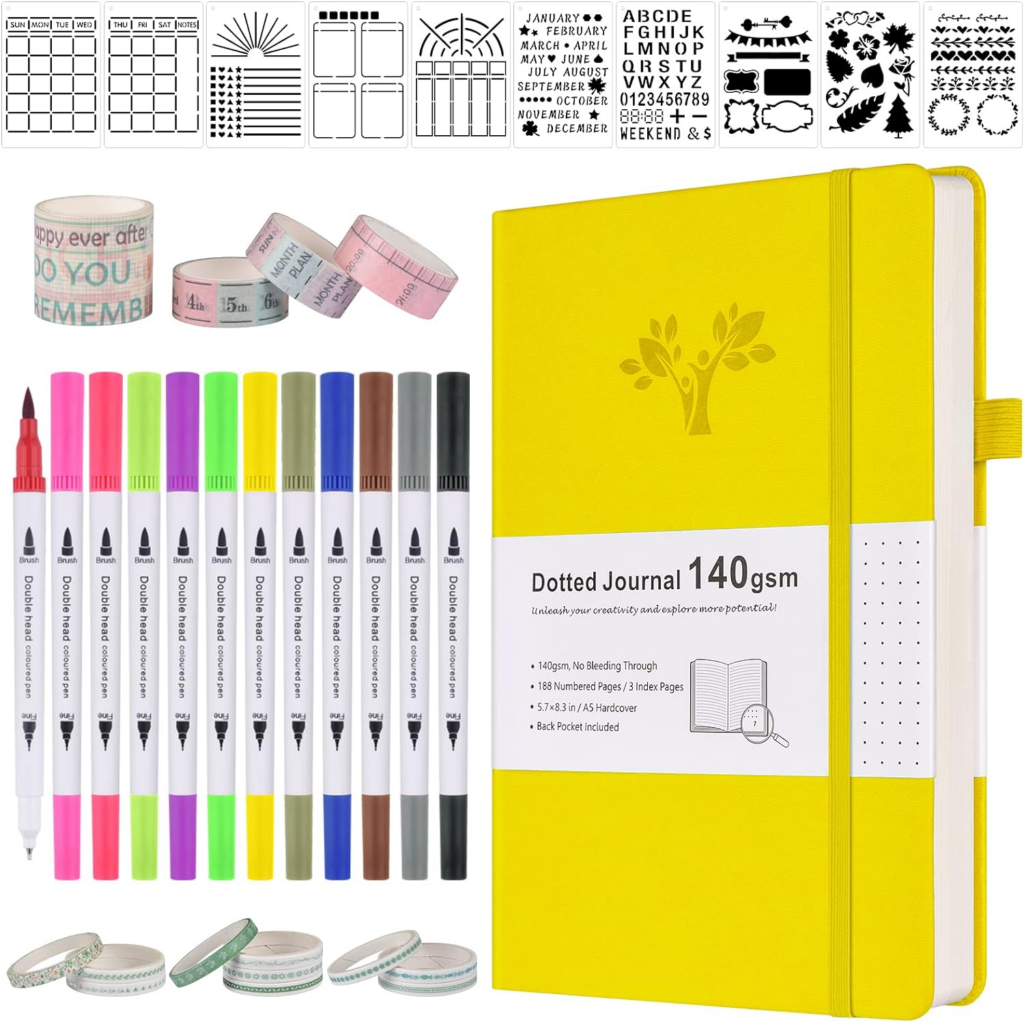In the fast-paced and ever-evolving landscape of productivity and organization tools, one method has captured the attention of many: the bullet journal. Originating from the mind of Ryder Carroll, the bullet journal system has gained popularity for its simplicity, flexibility, and adaptability to individual needs. In this comprehensive guide, we delve into the six key benefits of using bullet journals, exploring how they can transform the way you organize, plan, and reflect on your life.
1. Organization and Structure: A Symphony of Thoughts and Tasks
At the heart of the bullet journal lies a systematic approach to organizing thoughts, tasks, and goals. The method of rapid logging, facilitated by simple symbols, provides a structured framework for note-taking. Each entry is categorized into bullets, tasks, events, and notes, allowing for quick and efficient documentation. This structured approach not only helps declutter the mind but also lays the foundation for a well-organized and coherent planning system.
2. Flexibility and Customization: Tailoring Your Journal to You
One of the standout features of bullet journaling is its adaptability to individual preferences. The blank canvas of a bullet journal allows users to design layouts and formats that suit their unique needs. Whether you prefer a minimalist approach with straightforward to-do lists or a more intricate system incorporating schedules, habit trackers, and goal-setting pages, the flexibility of bullet journaling accommodates a spectrum of organizational styles. This customization aspect empowers users to create a planning system that resonates with their workflow and resonates with their aesthetic preferences.
3. Increased Productivity: From Ideas to Action
The act of physically writing down tasks has been proven to enhance memory and focus. Bullet journals take this principle to the next level by providing a centralized space for tasks, events, and notes. The rapid logging system encourages users to condense information into short, actionable phrases. This process not only simplifies the planning process but also facilitates a deeper understanding of priorities. The result is heightened productivity as users can efficiently navigate through their tasks, turning ideas into tangible actions.
4. Goal Tracking and Reflection: Navigating Your Journey
A dedicated section in many bullet journals is reserved for goal-setting and reflection. This feature distinguishes the bullet journal from mere planning tools. Users can set both short-term and long-term objectives, tracking their progress over time. The reflective aspect allows individuals to celebrate achievements and identify areas for improvement. This intentional focus on personal and professional development transforms the bullet journal from a mere planner into a dynamic tool for navigating one’s journey, both in the short term and the long run.
5. Mindfulness and Stress Reduction: The Therapeutic Art of Journaling
The act of journaling, including bullet journaling, can be a meditative and mindful practice. As users engage with their journals, they become immersed in the present moment, redirecting their focus from external stressors. The intentional nature of bullet journaling, where each entry is considered and crafted, promotes mindfulness and reduces anxiety. Additionally, the satisfaction derived from physically crossing off completed tasks provides a tangible sense of accomplishment, contributing to an overall reduction in stress levels.
6. Creativity and Inspiration: The Artistic Side of Organization
Beyond its functional aspects, a bullet journal invites users to unleash their creativity. From colorful layouts and imaginative doodles to personalized symbols and intricate charts, the artistic potential of bullet journaling is boundless. This creative engagement not only makes the organizational process more enjoyable but also sparks inspiration. The act of customizing each page cultivates a sense of ownership and pride in the journal, transforming it into a personalized and inspiring space.
The Best Bullet Journal Guide to Organize your Life and Skyrocket your Productivity
The Practical Guide: Getting Started with Bullet Journaling
Now that we’ve explored the myriad benefits of bullet journaling, let’s delve into the practical side of getting started. Whether you’re a seasoned bullet journalist or a curious beginner, the following steps can guide you on your bullet journaling journey:
Step 1: Choose Your Journal
Selecting the right journal is a crucial first step. Consider factors such as size, paper quality, and the presence of dotted or grid pages, which can aid in creating organized layouts.
Step 2: Set Up Key Components
Create a legend or key that defines the symbols you’ll use for tasks, events, notes, and any other categories you wish to include. This will serve as a quick reference guide as you populate your journal.
Step 3: Design Your Monthly and Weekly Layouts
Decide on a format for your monthly and weekly spreads. Some users prefer a traditional calendar layout, while others opt for more creative designs. Experiment with different styles until you find what works best for you.
Step 4: Incorporate Collections and Trackers
Collections are thematic pages dedicated to specific topics, such as books to read, travel plans, or fitness goals. Trackers can include habit trackers, mood trackers, and any other personalized tools that align with your objectives.
Step 5: Reflect and Adapt
Regularly set aside time to reflect on your goals, achievements, and areas for improvement. Use this information to adapt and refine your bullet journal layouts and systems. Remember, the key to successful bullet journaling is flexibility and responsiveness to your evolving needs.

In Conclusion: Elevating Your Life Through Bullet Journaling
In conclusion, the benefits of using bullet journals extend far beyond mere organization. They offer a holistic approach to planning, seamlessly integrating structure with creativity. The flexibility of bullet journaling transforms it into a personal journey, allowing users to explore their goals, track their progress, and cultivate mindfulness. Whether you’re a professional seeking enhanced productivity or an artist seeking a creative outlet, the bullet journal stands as a versatile tool that adapts to your unique needs. As you embark on your bullet journaling journey, remember that it’s not just a planner—it’s a canvas for your ideas, a roadmap for your goals, and a reflection of your unique journey through life.
Unlock Your Potential: Boosting Productivity with Skillshare’s Time Management Courses


